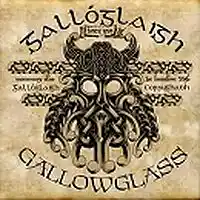
A little Classical power for the 2013 CBC Celtic challenge
Story behind the song
Galloglaigh (Gallogly or Gall-oge-lee)
Their name in the old Irish plural is Galloglaigh, the singular form is Galloglach (gall-og-lock), literaly meaning "foreign young warriors"
both words have since been anglicised as "Galloglass".
They were a Scottish hereditary warrior caste that originated around Argyll and the southern Hebrides, and settled in Ireland during the 13th to 15th centuries.
prominent Galloglaigh clans of Ireland
MacSuibhne (MacSweeney)
MacDomhnaill (MacDonnell/MacDowell)
MacSiothaigh (MacSheehy)
MacDubhgaill (MacDougall)
MacCaba (MacCabe)
MacRuari (MacRory)
MacSorley
O'Mullans
MacNeill
MacGreal
MacAnGhearr (Short/ Shortt/McGirr)
MacAnGalloglaigh(MacGallogly/English)
MacClean(MacAlean/MacLean/MacClane)
MacAilin (MacCawell/Campbell/MacCampbell/Allen/MacEllin)
MacAlister (MacEllistrum/MacAllister/MacAlistrum)
The first record of Galloglaigh warpipes being heard in Ireland was in 1259, when Aedh Ó Conchobair, King of Connacht, received a dowry of 160 Scottish warriors from the daughter of the King of the Hebrides.
In 1569 Turlough O'Neill married Lady Agnes MacDonald of Kintyre, her dowry consisted of at least 1200 Galloglaigh, each accompanied by two squires, one of whom carried his throwing spears and warpipes, the other his provisions, along with supporting clan, this could easily have numbered over 5,000 Galloglaigh coming into the area.
In return for military service a Galloglach was given land and high status entitling him to receive supplies from the local population.
The Galloglach was also known by his unique dress and battlefield accouterments, which included the two handed axe, shirts of mail, and unique stylised conical helmet.
Today descendants of the Galloglaigh are scattered throughout Ireland, but it was in Ulster that they are particularly numerous.
Historians not familiar with Gaelic culture often pass them off as mere mercenaries, but in reality they are probably one of the most important phenomenon in Irish history with a profound effect on the survival of Gaelic culture into the modern period.